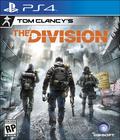The final game of Ubisoft's E3 2013 Press Conference was The Division, an MMO based on a new branch of Ubisoft's massive military-fiction metafranchise, and it established its premise through a prerecorded gameplay demo that generated quite a lot of buzz. Later, in a corner theatre in Ubisoft's E3 booth, a few developers showed one of the game's more ambitious features: an unusual form of cross-format multiplayer in the near-apocalyptic, mid-crisis setting.
The Division is set in modern-day New York City, two weeks after an engineered form of flu has wrought havoc on the city. Not only does this mean a lot of dead people, but it also means that every last bit of infrastructure has fallen apart, and anything left is in chaos. You are one of many sleeper agents in a special division that's trained to handle this kind of situation. You're the answer to the title's premise-setting and disturbing question, "What will it take to save what remains?"
Of course, it isn't ever that easy, but fortunately, you have some high-end military hardware backing you up. The Division is an MMO for next-gen consoles and mobile devices — and both play in the same world and work together to actively handle an array of situations.
However, the mobile player doesn't take the role of a character on the ground like PS4 and Xbox One players do. Instead, they play as drone pilots, a variant of the traditional "support" role, which ground players can also fill, though by using entirely different methodologies. They see the same environment as the ground players but interact with it from an overhead view and using a different array of abilities. Joining a group is done on a drop-in, drop-out basis. When you load up, your drone camera turns on, and on the rest of the group's screen, the drone flies into view. Voice chat is enabled to allow communication between both groups of players.
In the demonstration, the drone's commands consisted of a stack of buff and mez commands, including marking enemy locations and allowing players to shoot enemies directly if the cover is sufficiently flimsy. Unfortunately, the drone cannot see the physics details of bullets flying through an unarmored car, but they'll see if the car was destroyed. Most interesting, they also had a few offensive commands that charged up based on their successful use of support actions; an orange "super meter" gives them a single missile to fire.
The developers didn't mention any limitations on the drone other than its distinct set of functions and commands. From the looks of it, the intent is that a party should have one but will also want plenty of ground forces, thus relegating the drones to support. Nonetheless, the cross-system integration is clear, present, and looks like it will be a decently enjoyable extension to the game.
Tom Clancy's The Division's release date remains undetermined, but with its ambitious way of handling cross-platform interaction, Ubisoft has a winning design concept. We can't wait to see how this works out in the final game.
More articles about Tom Clancy's The Division










 The Division is an online, open-world RPG where you explore the once-familiar streets and landmarks of the Big Apple, now decimated by looting and overrun by clans that will do anything to survive.
The Division is an online, open-world RPG where you explore the once-familiar streets and landmarks of the Big Apple, now decimated by looting and overrun by clans that will do anything to survive.


